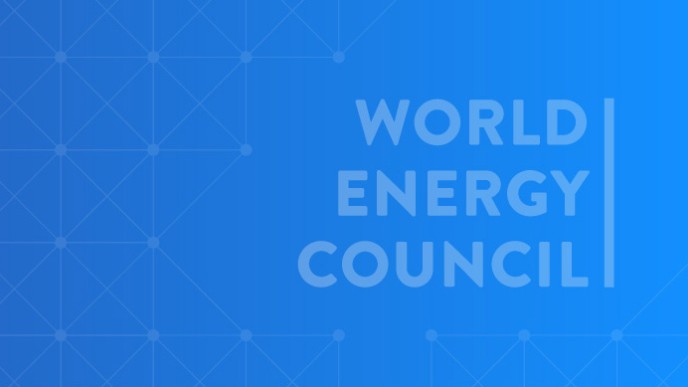Closing the implementation gap by involving road building communities
Dr Angela Wilkinson, Secretary General and CEO, World Energy Council
This article is based on an address given by Dr Angela Wilkinson on 8 June 2021 to the UK All-Party Parliamentary Group for Energy Studies.
On June 6th 2021, I completed my first international business trip in over 14 months, to the St Petersburg International Economic Forum in Russia. I also participated virtually to the 12th Clean Energy Ministerial meetings hosted in early June by Chile.
From my many interactions it is clear to me that energy transitions are happening everywhere. Simultaneously, the risk of extreme polarisation in the highly fragmented global energy leadership landscape is greater than ever - and growing.
The timing of this our engagement, between World Energy Council and PGES, could not be better: we are now just 5 months away from the UK-hosted COP meeting in Glasgow; the International Energy Agency’s latest report illustrates a step towards a new way of thinking; and energy - and its legislators - is well and truly in the spotlight.
So, what can we, as energy leaders, discuss – and more importantly – what should we do about it? There are plenty of talks, plenty of roadmaps about energy but little attention is given to the “doing” part of energy transition. At the World Energy Council, we focus on the “how to” rather than the “should do”, meaning we help translate talk into action.
That is why I am delighted to address the All-Party Parliamentary Group for Energy Studies. The bigger story of energy touches every aspect of our lives and involves more than energy industry actors. We call this broader community the “energy plus” community – that is the roadbuilding community. Who knows, maybe one day this committee will be the parliamentary Group for Energy Plus Studies?
Despite all the talk of a new era of cooperation, I am concerned by the crowded, fragmented and increasingly polarised energy transition leadership landscape. My messages is simple: managing successful global energy transition is first and always a story of humanising energy and it cannot be achieved without involving more people.
100 years of Energy for Prosperity
The World Energy Council is the world’s oldest, independent and impartial energy transition ‘road building’ community. When we first formed, back in the early 1920s, the transitions to coal and oil were essential to save forests and whales and in ushering a new era of energy for peace. The famous author, H.G.Wells, and Lord Reith, the founder of the BBC, were present at our inaugural World Power Conference in 1924. They called us a “breath of fresh air” and we became the place to find clarity and independently minded common sense - and a safe place to express your views.
The subsequent transition to electrification and life at the ‘press of a button’ ushered in an era of energy for prosperity and the hope of better-quality lives of billions of people worldwide.
Our one-hundred-year heritage in managing energy transitions for peace and prosperity is the unique foundation for our role in convening and cultivating the practical know-how and best practices needed in today’s era of energy for people and planet.
We exist to grow and support the new energy-plus communities – the energy roadbuilders who are progressing energy transitions along multiple pathways in every region of the world.
Being impartial and impactful is not easy, but it is what we do.
We do not advocate for any country, company or technology. We accelerate the pace of social learning and enable best practice exchanges. We have the credibility and courage to call for a sense-check on hubristic advocacy, something that you, as parliamentarians, may come across from time to time.
Three eras of energy transition and the 4D drivers
In the current era of “energy for people and planet” there is a new imperative of faster-paced and inclusive global energy transition. We at the Council safeguard an agenda of more energy and climate neutrality to secure the benefits of sustainable energy for all. Let’s be very clear: the world will require more energy to deliver quality livelihoods for all. Let me also reassure you that every region is looking to play a part.
This is important because the energy solutions that we pursue must meet the needs of the many, not the few. I am interested in delivering solutions to the 90+ per cent of humanity, not just the wealthy 2%. And not forgetting the 1 billion who lack basic access and 3.5 billion people who lack clean cooking.
During the 24th World Energy Congress in Abu Dhabi we noted that value generation is moving along the value chain and closer to the end user. We highlighted a shift in leadership mindset to demand-driven solutions and started to explore the implications of the new, customer centric energy future.
We added a fourth D to the three key global drivers of change we have been tracking for over a decade. The fours Ds are Decarbonisation, Decentralisation, Digitalisation and Disruption - by demand. This highlights that the ways in which energy is being used, traded and transported are changing fast.
The new pattern of demand-side disruptive innovation is often confused as the push of renewable power enabled by the rapid fall in price of solar and wind power. It involves the pull of people and directs attention to the social energy agenda and the need for an honest conversation about the market price, system costs and affordability. It involves integrated policies which balance energy security, affordability, and environmental sustainability – or what we have coined as the ‘energy trilemma’.
Addressing socio-economic challenges in energy transition also benefits from engaging the increasing diversity in energy in the broadest sense – including people, new uses, behaviours, and skills.
Focus on the S of “Sustainable” in ESG and closing the gap of activating consumers
The Covid crisis reminds us that access to energy is uneven and a much bigger story than any single issue or technology. Renewables will need other energy friends and flexible storage solutions to get to scale. Pathways for clean heat, clean molecules and clean electrons are interlinked for decades to come.
There is an increasing proliferation of roadmaps, full of promises about accelerating technology and tipping points and yet empty of details on people, uses and behaviours. The gaps between energy “haves” and “have nots” have grown wider in this crisis and this pattern is evident in all regions and countries. In a post covid world, we must also prepare for the return of global energy demand growth, anticipate new energy uses and users and change behaviours.
We are already working to develop demand-focussed energy scenarios that can be used by multiple stakeholders to inform action now. We have been conducting regular surveys of our World Energy community to map and inform ‘activation gaps’. For example, our surveys show a gap exists between what customers are doing and what customers need to be doing to drive transition forward. Closing these gaps will not be easy.
Price, affordability and cost
As I have already mentioned, an understanding of the differences and connections between market price, whole system cost and affordability is lacking, even though it is essential to managing successful energy transitions.
The market price relates to but is not the same as the number at the bottom of the bill. Its affordability depends on whether the recipient has the resources available to pay the bill. Of course, ability and willingness to pay are different things. Energy poverty is not something confined to the developing world – it is rife in the United Kingdom too and you will, regrettably, find it in your own constituencies and geographies.
The “whole system cost” is different altogether and takes longer to explain. Suffice to say that there are many locally clean energy solutions that are globally dirty and unfair. And how often do new investors and technology promoters ask users about the value of their energy supply? Failure to address this question in Eswatini has led to a default on payments for solar and minigrid-based energy.
A decade for delivery: the need for roadbuilding and road-mapping
In this decade of delivery, humanising energy is imperative to closing the implementation gap and activating road building communities. Progress is usually 1% inspiration and 99% perspiration. The hard work in translating net zero goals and carbon-positive visions into reality has only just begun.
I believe we have a responsibility to society to highlight that ALL new and improved models of human and sustainable development will need cleaner, more just and more flexible energy, in multiple useful forms – heat, power and liquid fuels.
We all know it is important to make a start – to set targets and timelines and to coordinate “high level” road-mapping. We also know that top-down energy transition road mapping needs to be well coordinated across multiple levels, issues and sectors. But policy coherence cannot be achieved without people coherence.
Knowing how to develop a plan is not enough, it needs to be cocreated, translated and implemented. More people literally need to get involved in progressing multiple pathways to the anticipated customer-centric, climate neutral and abundant energy futures needed for billions of better lives and a healthy planet.
Only the “pull” of connected and increasingly diverse energy societies will drive roadbuilding fast enough along multiple pathways. It will mean more practical and affordable options for the 99% of societies.
Any large-scale system change is invariably a socially messy affair and action-learning is required as more people get involved in building forward together. Roadbuilding involves effective multi-stakeholder cooperation, aligned across multiple levels and interacting up, down and sideways. This can only flourish through active trust and by engaging with diversity in energy– geographies, technologies and most importantly - people. As parliamentarians, you have a key role in this space.
Conclusion
Let me conclude. We recognise that a successful global energy transition is more akin to the challenge of ‘rebuilding the plane as we learn to fly’, rather than a simple problem of swapping old technology for new.
We see new threats to world peace if the “principle vs. pragmatism” battle continues to gain momentum towards extremes in the ‘Race to Zero’. Today, there seems to be an underlying fear that ‘pragmatic’ is just another word for ‘inertia’. That is one reason why we champion the Humanising Energy imperative.
History shows that Demonisation can have powerful unintended consequences. It is time to overcome the ‘green us vs.them’ and promote ‘practivism’. All governments and businesses need to help societies better understand that all new models of human and economic development require a change in energy uses, behaviours and supply mix.
There is no silver bullet. There is no green bullet. In fact, there isn’t any single couloured bullet, or answer. We need more action learning and fewer ‘right vs. wrong’ words to shift global gears and build forward together. Success cannot be achieved without a globally open mindset and engaging with increasing diversity in energy situations and solutions.In that, we all have a role to play.
I invite you to the discussion.





